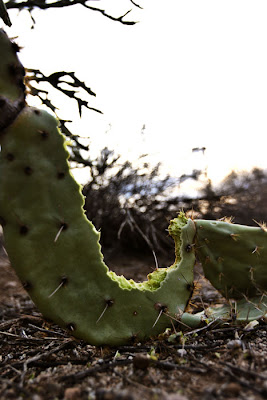The Secrets of the Desert
How many times do we as Arizonans just drive some place and not really understand what the geography truly holds? We just drive through appreciating what we see from the road and keep going. Being one who has lived in this desert my entire life, and one that was raised well outside the city limits of Phoenix, I can truly say that I have spent many years admiring the deserts beauty. It seems like a lifetime ago when I lived in Maricopa, but the power of the desert has never left me.
This weekend I decided to go down to Tucson to spend some time with some old friends. My friends, both avid big game hunters, and like-minded appreciators of the desert took me on what they call a “Antler Walk.” They live dead smack in the middle of the Saguaro Nation Park, where in my opinion is some of the most beautiful scenery that Arizona has to offer.

We drove only about 3 miles from their house to reach a destination in the park that they wanted to walk in to see what we could find. Knowing we couldn’t get too far into the desert with the amount of light we had left, they deemed this to be a “shorter walk.”
We took one step out of the vehicle and the next into the pure beautiful desert where the animal kingdom dominated the land far more than any human can imagine. There were mule deer, coyotes, javelina, rabbit, fox and rodent tracks everywhere to be seen. But even more prevalent was the trademark plant life that in the Arizona Desert.


Walking further into the desert we came across a prickly pair cactus that had been the food of some animal within the last 24 hours. All around the base of this plant were footprints and rabbit droppings.

He told me that this is pretty remarkable. The dry arid conditions and the unusually dry monsoon season have brought the desert animals to the edge. They are eating things, which they normally don’t to get the water needed to survive.
The evidence of animal activity was everywhere. Something that I was used to seeing, but analyzing, evaluating and piecing together all the evidence to make a story of what happened to the area was absolutely fascinating to me.
The main point of the desert walk was to search for the mule deer’s antler sheds. Every year, mule deer will drop their antler’s only to grow them back longer and stronger for the following year. It is a great way to track the health and population of bucks in the area. However with as much ground shrubs, cactus, and general bramble that litters the desert floor, it takes a trained eye to spot out these antlers. If the eye is trained, the desert holds the evidence left by the deer to lead you to the right place.

White Thorn Acacia trees are apparently the tree of choice for bucks to rake their antlers within its bramble to make an incredible amount of noise. It is believed that it is an act of territorial dominance to other nearby Mule Dear, however with White Tail Deer, who participate in the same actions, do it for a completely different reason. A colony of scent glands are at the base of their antlers and “rubbing” their rack marks territory via sent. The trees that are rubbed are literally torn to shreds with braches thrown many feet away.
5 minutes after finding one of these rubs and about 2 miles into the desert from the road, we came across our first antler shed. Probably 8 months ago, this piece of history was laid down untouched by a majestic beast that wore this rack proudly. It was really cool to see it sitting there being a part of the desert floor.

My expert then went on to explain to me the importance of these antlers and how they can be used to piece together the character and health the deer holds.

Nearly 2 miles into the desert and so much already learned the Sun finally broke through the overcast evening and turned the shadow covered desert into a vibrate, radiant array of colors.

Immediately I was brought back to all the days I spent riding around on my quad in Maricopa. When I was 16, I drove out every night during the summer to photograph the amazing sunsets the desert has to offer. They will never leave my memory even though they were so many years ago. We needed to get out of there quickly before our light left us. So we about-faced and high tailed it out of the desert.

The desert had one last secret to show me for appreciating its majesty. One of the most beautiful sunsets I have experienced in a very long time.

I learned so much in such a short time. I cannot wait until I get another chance to walk in the desert and witness what secrets lie waiting for me to uncover…


